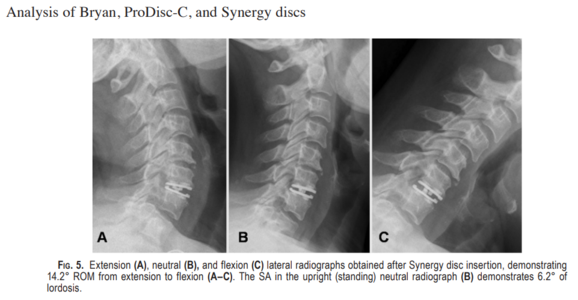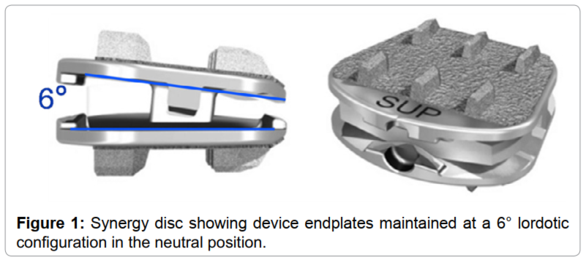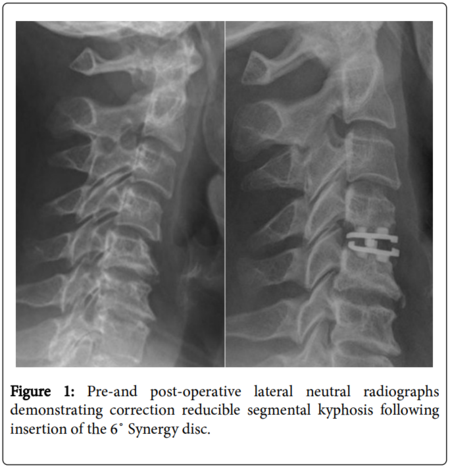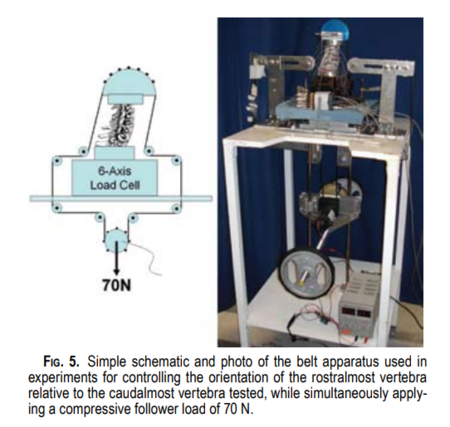
Objective. Cervical total disc replacement has emerged as a surgical option to preserve motion and potentially avoid adjacent-segment disease after anterior cervical discectomy and fusion. Recently, much attention has been directed at the ability of a given device to maintain and/or restore normal segmental alignment. Nonphysiological disc and segmental angulation could result in increased stresses transmitted to the facet joints and posterior elements, conflicting with the essence of arthroplasty and potentially leading to adjacent-segment disease. The goal of this study was to contrast device alignment and segmental kinematics provided by 3 different cervical disc prostheses.
Methods. Sixty patients were retrospectively analyzed and divided into 3 groups receiving the Bryan, ProDisc- C, or Synergy disc. Only single-level arthroplasty cases were included in the study. Lateral dynamic radiographs of the cervical spine were analyzed using quantitative motion analysis software (Medical Metrics, Inc.) to analyze the kinematics at the index level both preoperatively and postoperatively. Several parameters were noted, including range of motion, disc angles, shell angles, anterior and posterior disc heights, translation, and center of rotation. Preopera- tive and postoperative data were compared using the Student t-test with a significance level of p < 0.05.
Results. Postoperatively, all 3 disc groups maintained adequate range of motion at the implanted level. With respect to the shell angles, the Synergy disc demonstrated the least variability, maintaining 6° lordotic configuration between the device endplates. In the Bryan disc group, significant shell kyphosis developed postoperatively (p < 0.0001). Both ProDisc-C and Synergy discs significantly increased anterior and posterior disc heights (p < 0.0001). The Bryan and Synergy discs maintained the natural center of rotation, whereas significant anterior shift occurred with ProDisc-C.
Conclusions. The goal for motion preservation at the implanted level was achieved using all 3 devices. The Synergy disc was unique in its ability to alter device angulation by 6°. The Bryan disc demonstrated device endplate kyphosis. Both the Synergy disc and ProDisc-C increased disc space height. (DOI: 10.3171/2010.3.FOCUS1058)





